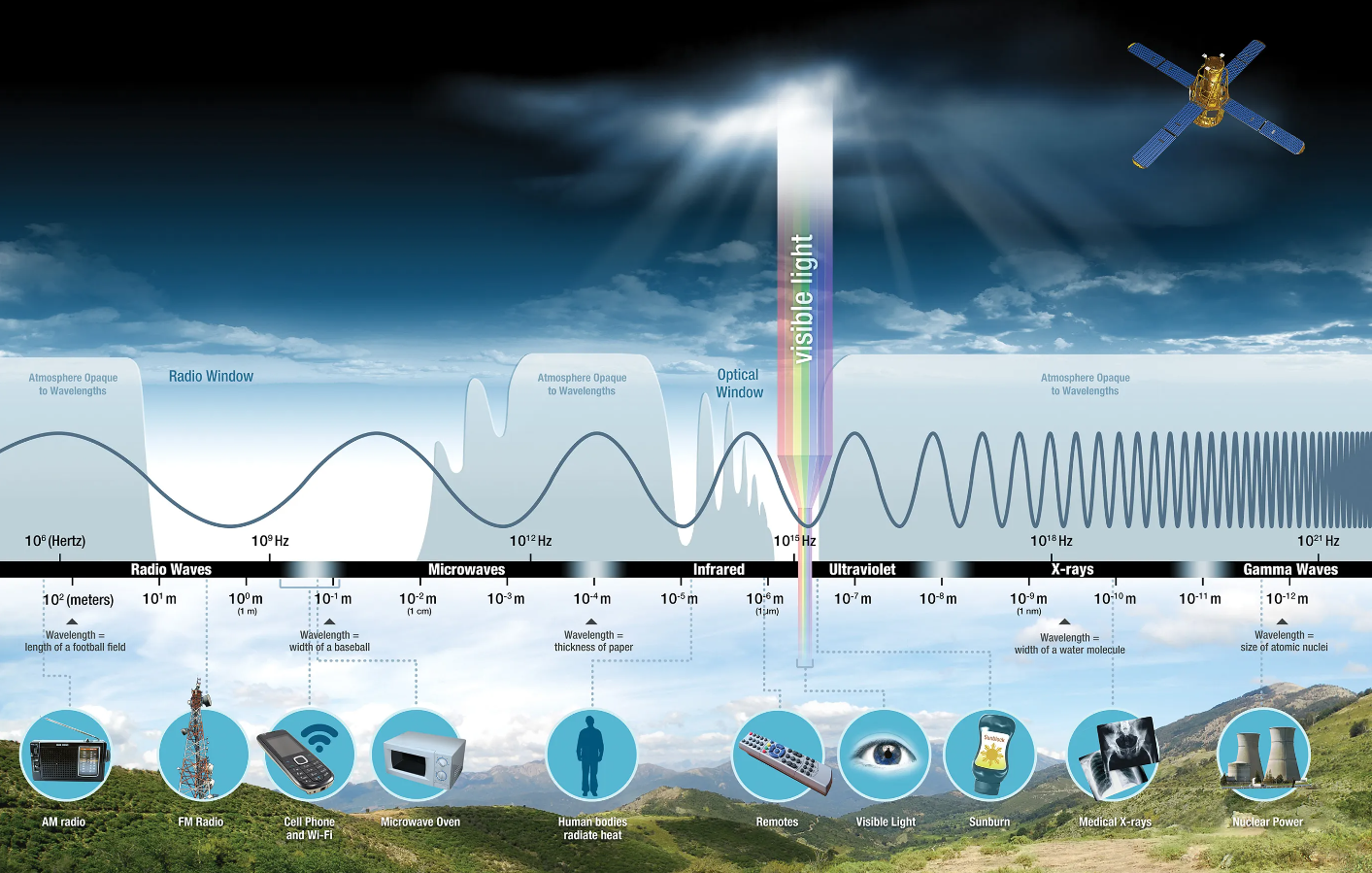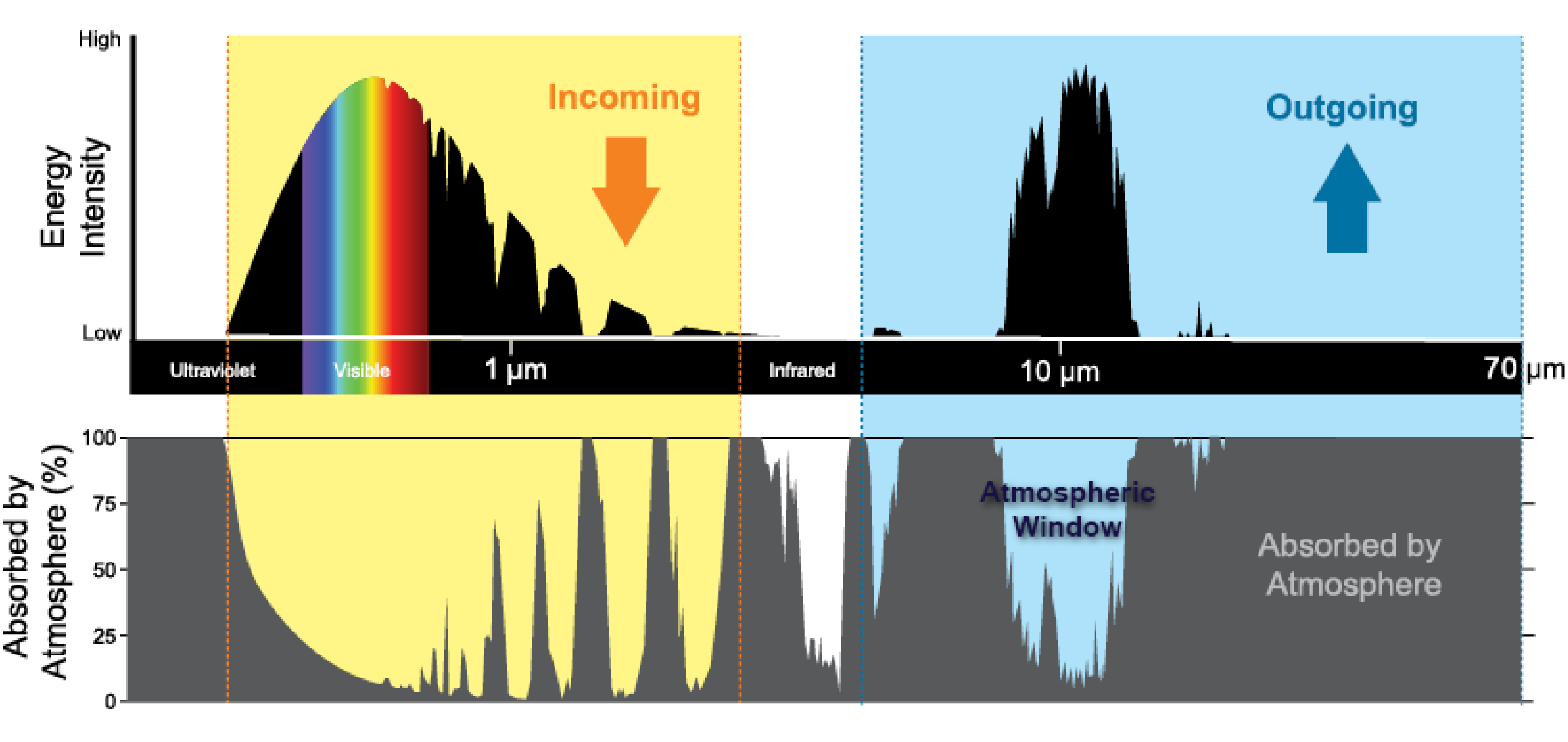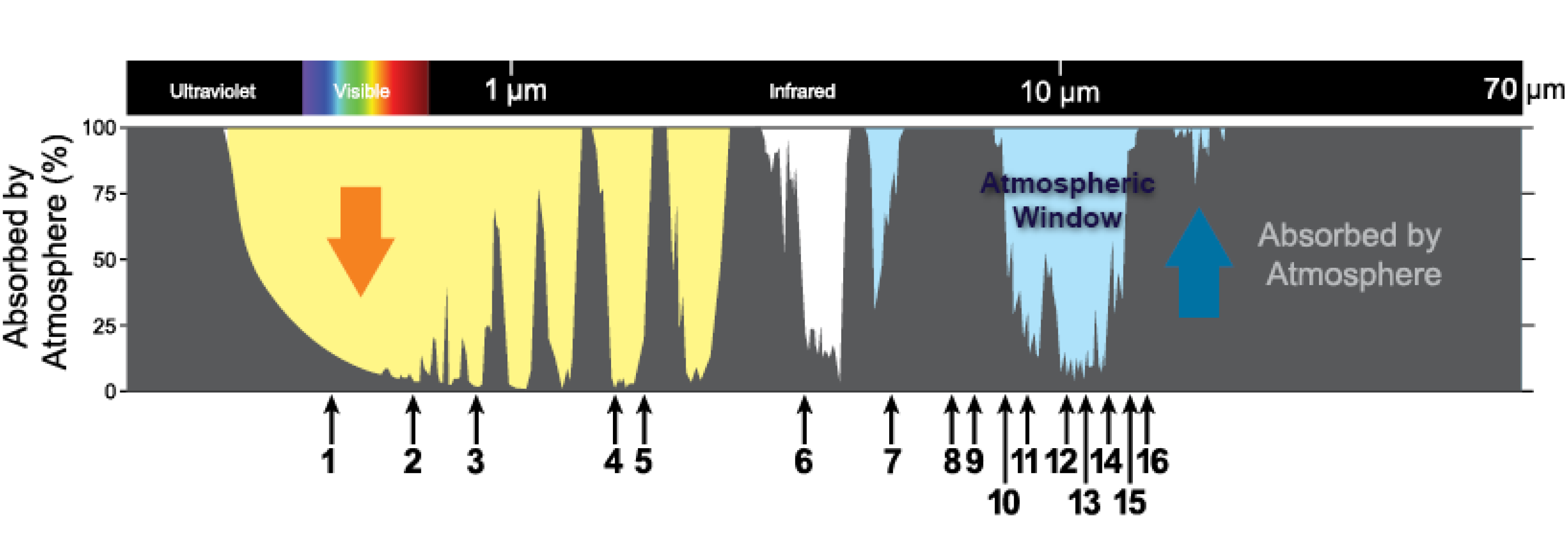Electromagnetic Spectrum and Its Relevance
Introduction:
For remote sensing to be effective, it requires a source of electromagnetic radiation to illuminate the target, except when the target itself emits the sensed energy. All electromagnetic radiation exhibits fundamental properties and adheres to predictable behaviors governed by wave theory. It comprises an electric field (E) that fluctuates in magnitude perpendicular to the direction of propagation and a magnetic field (M) oriented at right angles to the electric field. Both fields travel at the speed of light (c). Two characteristics of electromagnetic radiation are particularly important for understanding remote sensing. These are the wavelength λ and frequency ν. Wavelength and frequency are related to each other by:
c = λ ν
The electromagnetic spectrum ranges from the shorter wavelengths (including gamma and x-rays) to the longer wavelengths (including microwaves and broadcast radio waves). There are several regions of the electromagnetic spectrum which are useful for remote sensing.

Although we see sunlight as a uniform or homogeneous colour, it is actually composed of various wavelengths of radiation in primarily the ultraviolet, visible and infrared portions of the spectrum.
- UV (0.01 µm - 0.4 µm): For most purposes, the ultraviolet or UV portion of the spectrum has the shortest wavelengths which are practical for remote sensing. Some Earth surface materials, primarily rocks and minerals, fluoresce or emit visible light when illuminated by UV radiation.
- Visible (0.4 - 0.7 µm): The light which our eyes - our "remote sensors" - can detect is part of the visible spectrum.
- Infrared (IR) (0.7 - 100 µm): The next portion of the spectrum of interest is the infrared (IR) region.
The infrared region can be divided into two categories based on their radiation properties -
- Reflected IR (0.7 µm to 3.0 µm): Radiation in the reflected IR region is used for remote sensing purposes in ways very similar to radiation in the visible portion. The reflected IR covers wavelengths from approximately 0.7 µm to 3.0 µm.
- Emitted or thermal IR (3.0 µm to 100 µm): The thermal IR region is quite different than the visible and reflected IR portions, as this energy is essentially the radiation that is emitted from the Earth's surface in the form of heat. The thermal IR covers wavelengths from approximately 3.0 µm to 100 µm.
- Microwave region (1 mm - 1 m):The portion of the spectrum of more recent interest to remote sensing is the microwave region.
| Region | Wavelength range (approx.) | Frequency range (approx.) | Comments |
|---|---|---|---|
| Long-wave radio | >10 m | <3x107 Hz | Includes traditional AM radio region. These frequencies can travel long distances by multiple reflections between the surface of the earth and its ionosphere. |
| Short-wave radio | 10 cm - 10 m | 3x107 - 3x109 | Used for TV, FM, and other communication purposes. Generally travels only relatively short distances because the ionosphere is transparent to it. |
| Microwave | 1 mm - 10 cm | 3x109 - 3x1011 | Present limit of radio technology for most purposes. |
| Far infrared | 30 μm - 1 mm | 3x1011 - 1013 | 3 K radiation fills universe. |
| Thermal infrared | 3 μm - 30 μm | 1013 - 1014 | Thermal emission of earth and planets. |
| Near infrared | 0.7 μm - 3 μm | 1014 - 4x1014 | Solar and stellar emission. |
| Visible | 0.4 μm - 0.7 μm (1.7 - 3 eV) | 4x1014 - 7x1014 | Peak of solar radiation. Visible to human eye, standard photographic film and CCD video detectors. |
| Ultraviolet | 0.2 μm - 0.4 μm (3 - 6 eV) | 7x1014 - 1.5x1015 | Divided at 300 nm by atmospheric (ozone) cutoff. Appreciable solar flux causes sunburn. |
| Vacuum UV (EUV) | 0.01 μm - 0.2 μm (6 - 120 eV) | 1.5x1015 - 3x1016 | Very strong absorption in matter, hence very difficult to observe. |
| X-rays | 120 eV - 100 keV | 3x1016 - 3x1019 | Produced by electron beams in X-ray tubes, and by inner atomic transitions. Progressively more penetrating as E increases, up to many centimeters in water. |
| γ-rays | >100 keV | 3x1019 | Produced by nuclear and other high energy processes. Can penetrate up to meters in water. |
where, each units in meters are as follows:
| Unit | Prefix | Abbreviation | Symbol | Value |
|---|---|---|---|---|
| meter | Meter | m | 1m | |
| centimeter | centi | Centimeter | cm | 10-2m |
| millimeter | milli | Millimeter | mm | 10-3m |
| micrometer | micro | Micrometer | µm | 10-6m |
| nanometer | nano | Nanometer | nm | 10-9m |
| picometer | pico | Picometer | pm | 10-12m |
| femtometer | femto | Femtometer | fm | 10-15m |
| attometer | atto | Attometer | am | 10-18m |
Atmospheric windows
Atmospheric windows refer to specific wavelength ranges in the electromagnetic spectrum where the Earth's atmosphere is relatively transparent to radiation, allowing electromagnetic waves to pass through with minimal absorption or scattering. Of the total incoming elctromagnetic radiation, the atmosphere absorbs parts of this radiation while allowing other wavelengths to pass through. The places where energy passes through are called "atmospheric windows". We use these "windows" in remote sensing to peer into the atmosphere, which allows us to obtain much information concerning the weather.These windows are crucial in remote sensing, astronomy, and telecommunications because they allow signals or observations from space to reach the Earth's surface and vice versa. Key Atmospheric Windows are as follows:



- Visible Window (0.4 - 0.7 µm):
- Description: This range corresponds to the visible light spectrum, which is why we can see sunlight and other visible phenomena. The atmosphere is largely transparent to visible light, with minimal absorption by gases like oxygen and nitrogen.
- Applications: Remote sensing of land, oceans, and clouds; optical astronomy; human vision
- Near-Infrared (NIR) Window (0.7 - 1.3 µm):
- Description: The atmosphere is relatively transparent in this range, allowing for the observation of vegetation, water content, and surface temperatures.
- Applications: Vegetation monitoring, surface reflectance studies, and some forms of optical communication.
- Thermal Infrared (TIR) Window (8 - 14 µm)
- Description: This window allows thermal radiation emitted by the Earth's surface and atmosphere to pass through. It's crucial for observing temperature and heat patterns.
- Applications: Thermal imaging, climate studies, and infrared astronomy.
- Microwave Window (1 mm - 30 cm)
- Description: The atmosphere is mostly transparent to microwaves, except for certain absorption lines like water vapor and oxygen. This window is critical for satellite communication, radar, and some types of remote sensing.
- Applications: Weather radar, satellite communications, microwave remote sensing of atmospheric water vapor, and sea surface temperature.
References
Some other interesting things to know:
- Visit my website on For Data, Big Data, Data-modeling, Datawarehouse, SQL, cloud-compute.
- Visit my website on Data engineering

